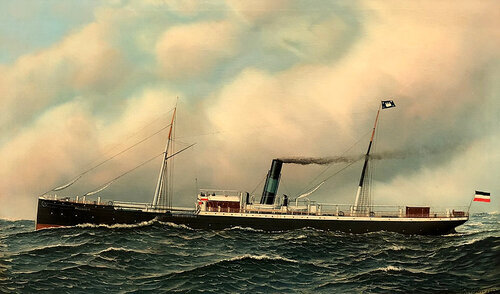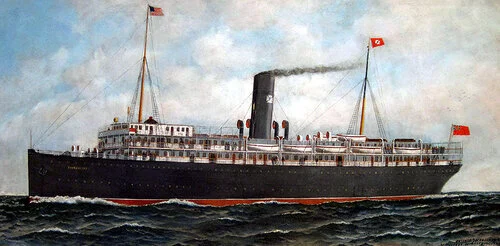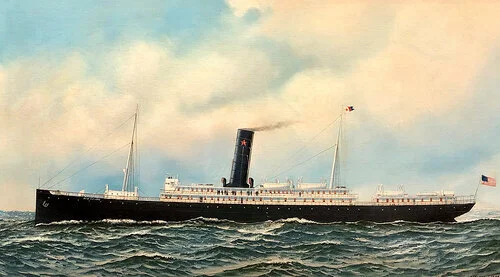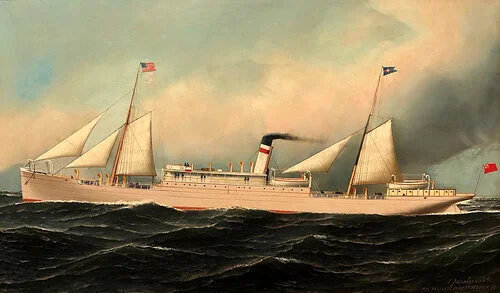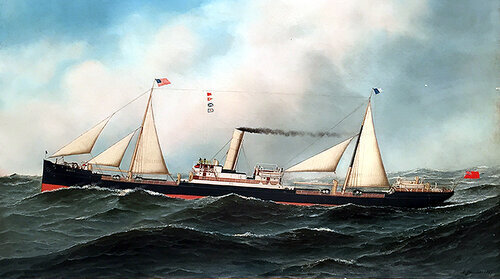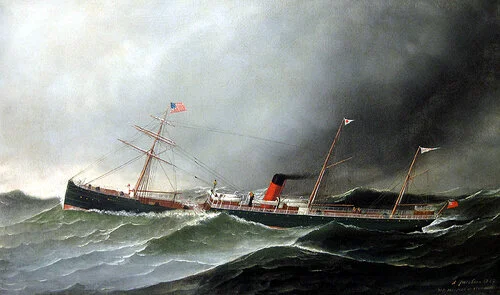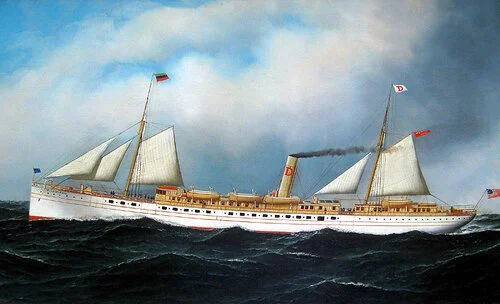Antonio Jacobsen
1850-1921
Click on any of the images for painting dimensions and pricing
One of the most fascinating figures in American marine painting is Antonio Jacobsen. Jacobsen was born in Copenhagen, Denmark in 1850. Because his father was a violin-maker, he was trained as a musician, but his true love was ships and the sea. He spent much of his time sketching by the waterfront.
When the Franco-Prussian War broke out in 1871, Jacobsen had no desire to be conscripted into the Danish army and came to the United States instead. With his sketching ability he quickly landed a job painting decorative scenes on the doors of iron safes. An executive of the Old Dominion Steamship Company was so impressed with his work, he asked him to paint pictures of some of the company's ships. This launched Jacobsen on his lifetime career.
During the course of his career it is estimated that Jacobsen painted between 5,000 to 6,000 paintings, almost exclusively portraits of ships. At one time during the late 19th Century, he was, in fact, commissioned on a daily basis by ship owners and captains to paint their vessels for posterity. It often happened that he painted the same ship over and over again for its officers and owners. Before starting a painting, Jacobsen would make detailed pencil sketches of the vessel, often covering four or five pages in a notebook. Each notebook was numbered and filed for reference.
His entire career was spent either in New York City or in a large house in West Hoboken, New Jersey that offered a magnificent view of the harbor. Over the years he painted every type of vessel: small and large, tugboats to racing sloops. In the mid-1880s, he did some forward-quarter views of yachts with sails billowing that, in the opinion of one expert came closer to fine art than any of his work.
Nearly every ship that sailed in and out of New York Harbor between 1873 and 1919 was chronicled by Jacobsen. While many of these extraordinary paintings have been combined in a special checklist published by the Mariner’s Museum in Newport News, Virginia, still others continue to come to light, even today. His characteristic profile of the vessel and unique treatment of the sea, make his paintings almost instantly recognizable to any marine enthusiast.
